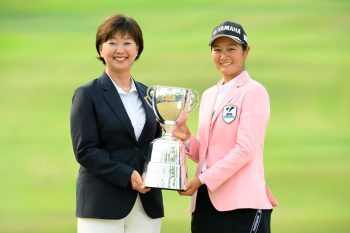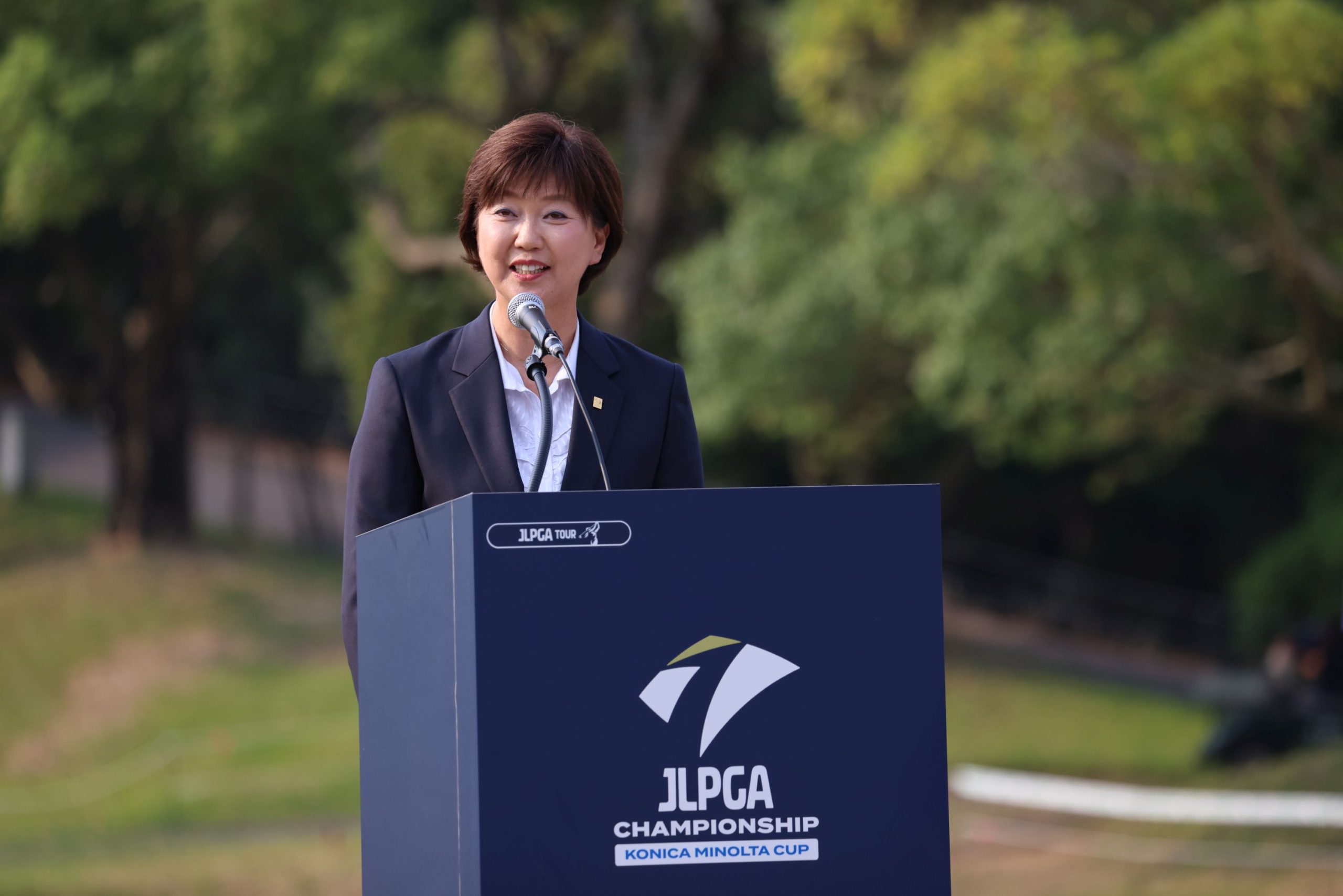
Sora Kamiya of Japan and the JLPGA President Hiromi Kobayashi after winning the JLPGA Championship Konica Minolta Cup. (Photo by Hiromu Sasaki/JLPGA via Getty Images)
Hiromi Kobayashi, the Chairman of the LPGA of Japan (JLPGA), is a woman on a mission.
Kobayashi has set her sights on two main goals- globalising the circuit and broadening its fan base beyond Japan’s borders.
To achieve this, she’s encouraging aspiring women’s golfers, especially those from Asia, to view Japan as an ideal destination to take their professional careers to greater heights.
Kobayashi is confident that increased participation from international competitors will immensely benefit the circuit- a sentiment echoed by a majority of JLPGA members.
“As of now, we observe more and more players exploring opportunities beyond their home countries,” remarked the well-travelled Kobayashi, who, during her peak years, clinched 15 wins across three prominent tours- the JLPGA, US LPGA, and LET.
“A growing number of Japanese players are realising the advantages of making the tour more international by welcoming foreign competitors.
“I’m convinced that as domestic and international players compete side by side, the overall appeal and competitiveness of the tour will surge.”
Since it was founded in 1967, the JLPGA Tour has consistently elevated its stature. Today, it is recognised as one of the premier women’s golf tours internationally.
For many years, the JLPGA Tour has held the distinction of hosting the highest number of events in a single season.
This season alone, the tour’s tournament calendar includes an impressive 38 events.
The recently concluded 56th JLPGA Championship Konica Minolta Cup, claimed by 20-year-old Sora Kamiya, marked the 26th event of the season.
Like all the established circuits worldwide, interested players may give the JLPGA Player Certification Test, more commonly known as Qualifying School, a shot to secure playing rights.
The four-stage Certification Test takes place from July to November. Based on their final standings, participants can also secure status on the developmental circuit, known as the Step Up Tour.
“I would be delighted to see a greater influx of international players in Japan. Professional golfers ought to compete in any tour for which they qualify, provided they have the requisite skills,” said Kobayashi.
“We’re always ready to welcome players from across Asia. A genuine concern for many might be the language barrier and the potential challenges associated with it. Yet, such hurdles can present themselves anywhere.
“Players must discern which tour aligns best with their ambitions and where they truly aspire to compete.”
Kobayashi firmly believes that the recent pioneering broadcast of the JLPGA Championship across six Asian nations — South Korea (SPOTV), Malaysia (Astro), Indonesia (TVRI), China (Golf Channel China), Thailand (Workpoint), and Taiwan (MOMO TV) — heralds the beginning of an exciting and promising new era for the tour.
“We’ve broadened our horizons by broadcasting in six Asian countries,” said Kobayashi.
“By championing diversity, we seek to elevate the prestige of our tour. Our broadcasts aim to spotlight the exceptional talents and contributions of international players in the JLPGA. As they achieve success, our aspiration is that they draw support from both their native fans and our passionate Japanese audience.
“In the grand scheme, it would be truly remarkable if the golf communities across Asia could become more intertwined, setting the stage for players to compete shoulder to shoulder and thereby nurturing the continual evolution of women’s professional golf in the region.”








